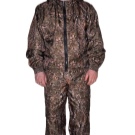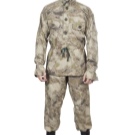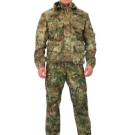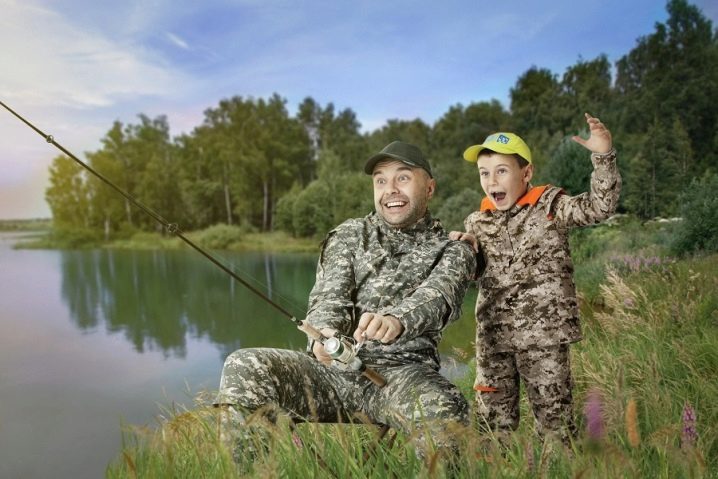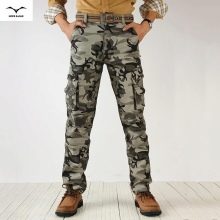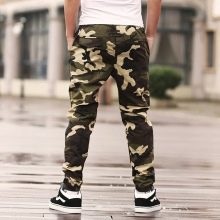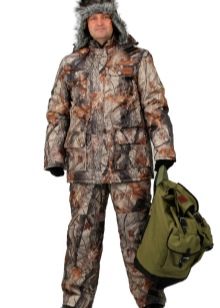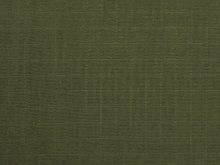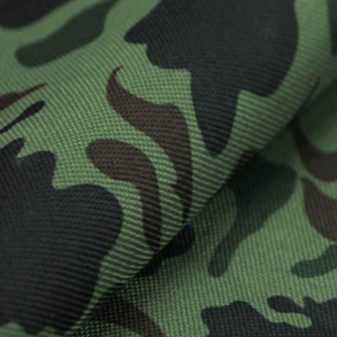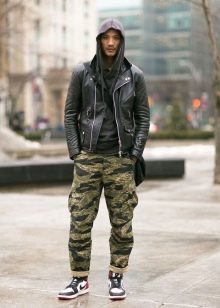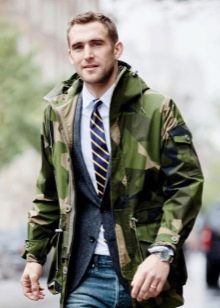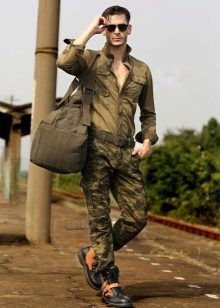Features of camouflage clothing for men

Fashion is fleeting and changeable, but there are things that remain unchanged for decades. Namely: comfortable, modern and particularly practical items. Knowledge of the features of camouflage clothing for men will significantly supplement and diversify the wardrobe. This moment is especially relevant for hunters, fishermen and farmers.
Peculiarities
A conversation about camouflage clothing for men should start with the fact that it has really unsurpassed camouflage properties. Since such things are not intended for the city, but for the "wild" areas, and often for unfavorable weather conditions, they are created with the help of reinforcing fabrics and membrane materials. Usually, in addition to the jacket, the set includes trousers, less often semi-overalls.
In any case, attention is paid to the resistance of the clothing to the piercing wind and its hydrophobic properties.
The camouflage wardrobe is different:
- practicality (minimal soiling and ease of washing);
- neat appearance even after long and strenuous use;
- mechanical strength (after all, the prototypes were created for the army, and in combat conditions there is no time to sew and hem);
- an excellent level of ventilation (which will be appreciated by hunters, fishermen, tourists);
- predominantly straight cut;
- collar width;
- the exception of any ornaments;
- saturation with buttons, belts and rivets;
- predominance of green camouflage color and dark tones.
Varieties
Do not think that camouflage is limited only to men's jackets and trousers. Various T-shirts, shirts, sometimes T-shirts can be made in this style. Pants and capri pants in a military style have a loose or baggy design. They contain inside and outside pockets. Zippers and accessories are common. Finally, footwear may well be camouflaged.
Camouflage clothing made of dense fabrics is quite widespread. You can safely travel in it even on cool days. Or in a dense damp forest. Models of the "Hill" type are considered universal. This series has proven itself equally well in forests and rocky areas. Such suits are equipped with reinforcing inserts in the most problematic places.
Separately, it should be said about camouflage clothing with an increased waterproof level, which is especially convenient for fishermen and residents of places where there is a lot of rain.
Materials (edit)
External similarities should not be misleading - a variety of materials are used to make camouflage clothing. For summer time, cotton fabric is often used, which breathes and therefore maintains an optimal microclimate. In the summer, options also apply:
- cloak matter;
- ripstop;
- polyester;
- nylon;
- peach soft ultra.
Raincoat fabrics are made of synthetic fibers and provide excellent moisture protection. It will be pretty easy to wash them off. Both polyester and nylon have other advantages: they prevent getting wet and are excellent at restraining gusts of wind.
These fabrics are very durable and very practical. Ripstop is no less durable, the service life is increased by adding reinforcing threads.
Peach Soft Ultra is another particularly resistant option. There is always a hydrophobic coating on the surface of such camouflage clothing. The fabric itself is velvety. It is made from pure cotton.
Fleece is the logical development of polyester. Lightweight and quick-drying fabric has gained immense popularity. However, account should be taken of the build-up of static electricity and the susceptibility to fire. Oxford fabric is no less successful now. It is resistant to strong heat and impervious to water.
Ripping Oxford clothes is almost impossible. Special impregnations significantly increase its performance.
How to choose?
Camouflage clothing should be selected for the season, not only taking into account the quality of the fabric. Coloring also plays an important role. For example, the summer uniforms of hunters and fishermen are usually painted in different tones of green. For the winter period, white tone and its various shades are more relevant. If you plan to engage in just active leisure and hiking trips, the color is less important. The most commonly used varieties are:
- cartoons;
- moss (full imitation of the forest);
- digital (universal solution for almost all areas);
- khaki (suitable for plains and mountains where there is no significant vegetation).
If you just plan to walk along the streets, you can choose any camouflage clothing or its imitation. The number of pockets is chosen purely at your discretion. It is very important to fit your wardrobe to your figure. The length of the jacket should be such that it is comfortable to walk and bend over in it. Variants with a belt or trousers with an elastic band are a matter of purely personal taste.
To move through the forest, a dense material and a hood are required. An anti-mosquito net, elastic bands, tightening sleeves and trousers are also highly desirable. This will help protect against blood-sucking insects, including ticks.
For winter, jackets with fleece lining with a collar lined with synthetic fur are recommended. In the off-season it is advised to wear raincoats.


